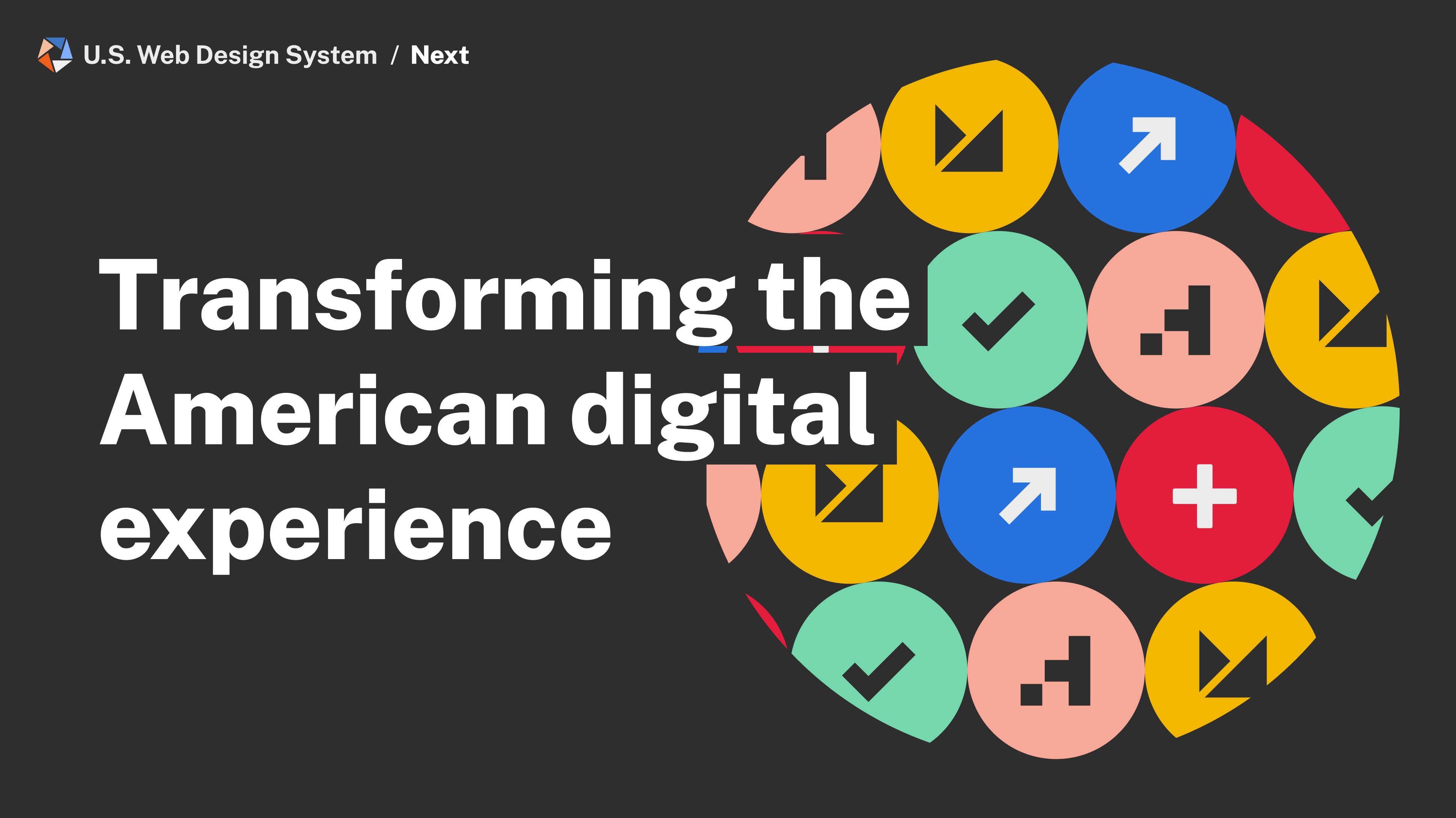
Transforming the American digital experience: The future of the U.S. Web Design System and beyond
Post filed in: Innovation
For millions of Americans, access to digital services isn’t a luxury — it’s critical. And how we deliver these services is just as important as what services we deliver. To improve, we have to take a more holistic look at the fragmented ecosystem of the thousands of federal websites that currently exist, all of which offer different experiences for the public to navigate.
The U.S. Web Design System (USWDS) is just one piece of widespread federal efforts to improve the public’s experience of government digital services. The design system provides principles, guidance, and code to help federal agencies deliver great digital experiences by making it easier to build accessible, mobile-friendly government websites.
The USWDS team recently published a research report—based on the largest research effort in our history—that summarizes our findings and outlines near-term opportunities to achieve a future vision for the design system, as well as a North Star vision for helping improve government digital services as a whole.
We conducted research across dozens of federal agencies to:
- Understand how teams are dealing with emergency response situations (specifically COVID-19) in terms of their digital communications
- Identify how USWDS can better support agencies in the future
- Uncover additional insights into improving federal digital services as a whole for the American public
- Determine ways to advance the design system through collaboration with agencies and other government customer experience initiatives
What we discovered
Agencies shared some common benefits that the design system provides:
- Makes hard things easy by providing a starting point and solid foundation for building websites
- Provides useful components and clear, well-written guidance that’s backed by user research and UX best practices
- Helps them make more data-informed decisions using standardized, consistent, and accessible best practices, instead of relying on personal judgment
- Saves time and energy so they can focus on their mission and more of what their customers need
- Can help build trust with the public by providing continuity across federal websites, reducing existing fragmented and inconsistent experiences
Even given all these benefits, there are emerging use cases and ongoing challenges that agencies need help overcoming. This led to the creation of 11 new components and page templates for emergency response, as well as five key findings that summarized what agency teams need to successfully adopt, use, and maintain the design system, as well as considerations for the USWDS team and others as we start to solve these challenges.
“The more we use the design system to standardize how we build digital experiences, the more we will improve how the federal web functions.” — From a digital modernization thought-leader during interviews
Based on these findings, the design system team has prioritized some key opportunity areas:
- Improve strategic communications and engagement with key audiences
- Provide more robust guidance and support around getting started with the design system
- Leverage related efforts within TTS and the broader government digital services community
There are also some larger strategic decisions to be made about the most effective operating model for federal websites and the design system that supports them. Even with improved guidance and support, the design system and the agencies using it will continue to run up against resourcing and scaling challenges.
Our North Star vision thinks beyond agency adoption to ask the following:
What if the federal government provided even more robust technology shared services to reduce the burden on individual agencies?
So instead of every agency trying to build and manage all aspects of their own sites, the federal government could provide an option of a true turnkey service, transferring the specific technology burden to a specialized team. This would allow agency resources to be freed up to focus on their mission-related activities. Using shared services could be less expensive and more effective, while also enabling smaller sites to launch and maintain their content more efficiently.
What if key content and functionality of government websites was consolidated into a single or fewer public services websites, like usa.gov and recreation.gov?
A more consolidated online public services website (a true “federal front door”) could provide a better, more reliable user experience for the public, while promoting more efficient efforts, research, and content. Building independent sites with tight coupling to GSA’s common government products and services (cloud, search, analytics, design, and implementation) would also promote improved continuity, security, trust, and long-term maintainability while addressing some of the persistent infrastructure challenges of decentralized implementation.
The path forward
With each finding, we pose some questions that reframe what we learned into opportunities for innovative solutions. Here are a few of those questions to get the wheels of innovation turning.
- How might we better explain what 21st Century IDEA means for agencies and help them understand how they are performing?
- How might we help agencies anticipate and plan for the costs and staffing needs associated with design system adoption?
- How might we better communicate a “by the people, for the people” mindset?
- How might we encourage and support more cross-agency collaboration?
- How might we provide more extensive customer support to customers?
We’re at an exciting moment in the evolution of digital services in government to take a more holistic approach to improving the public’s experience by scaling what works and continuing to invest in the design and technology capabilities of our federal workforce.
Read the whole research report and join the USWDS community to learn more and stay updated on progress.

 U.S. General Services Administration
U.S. General Services Administration
